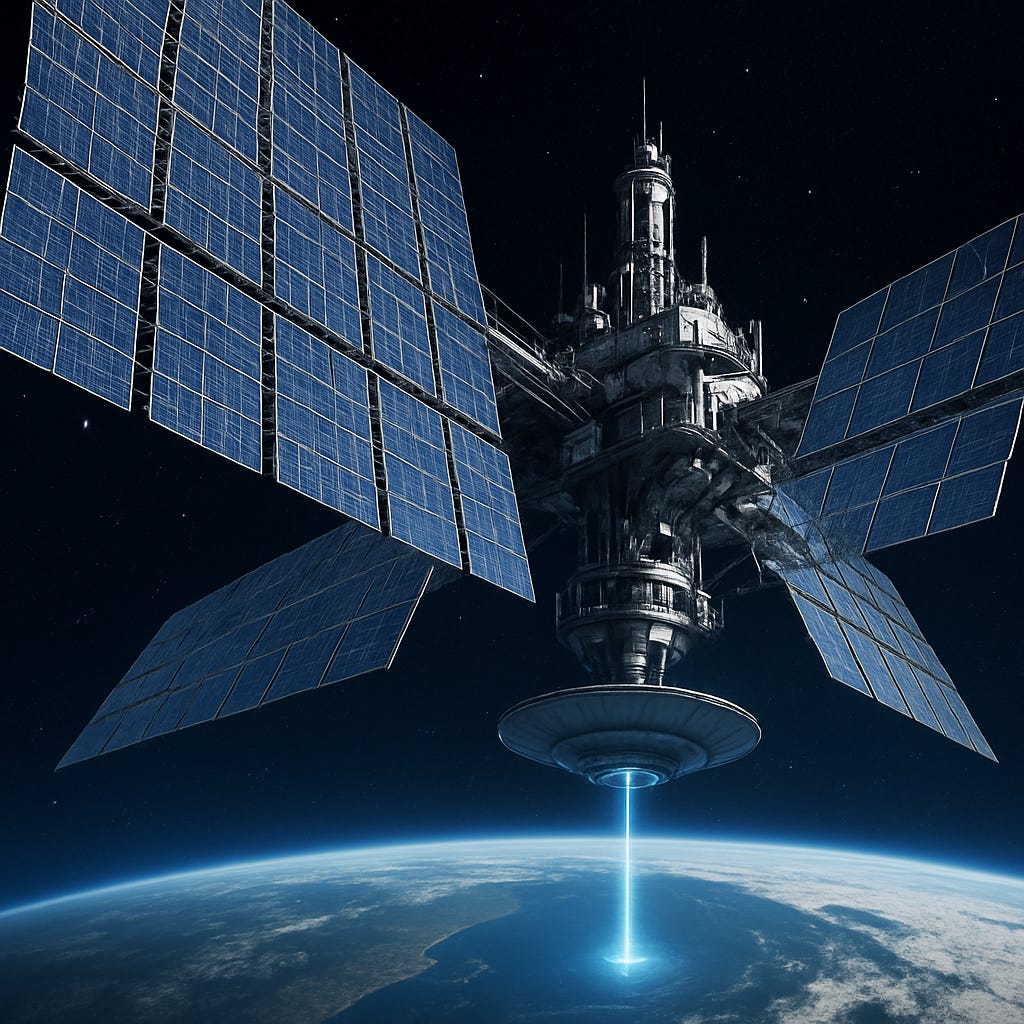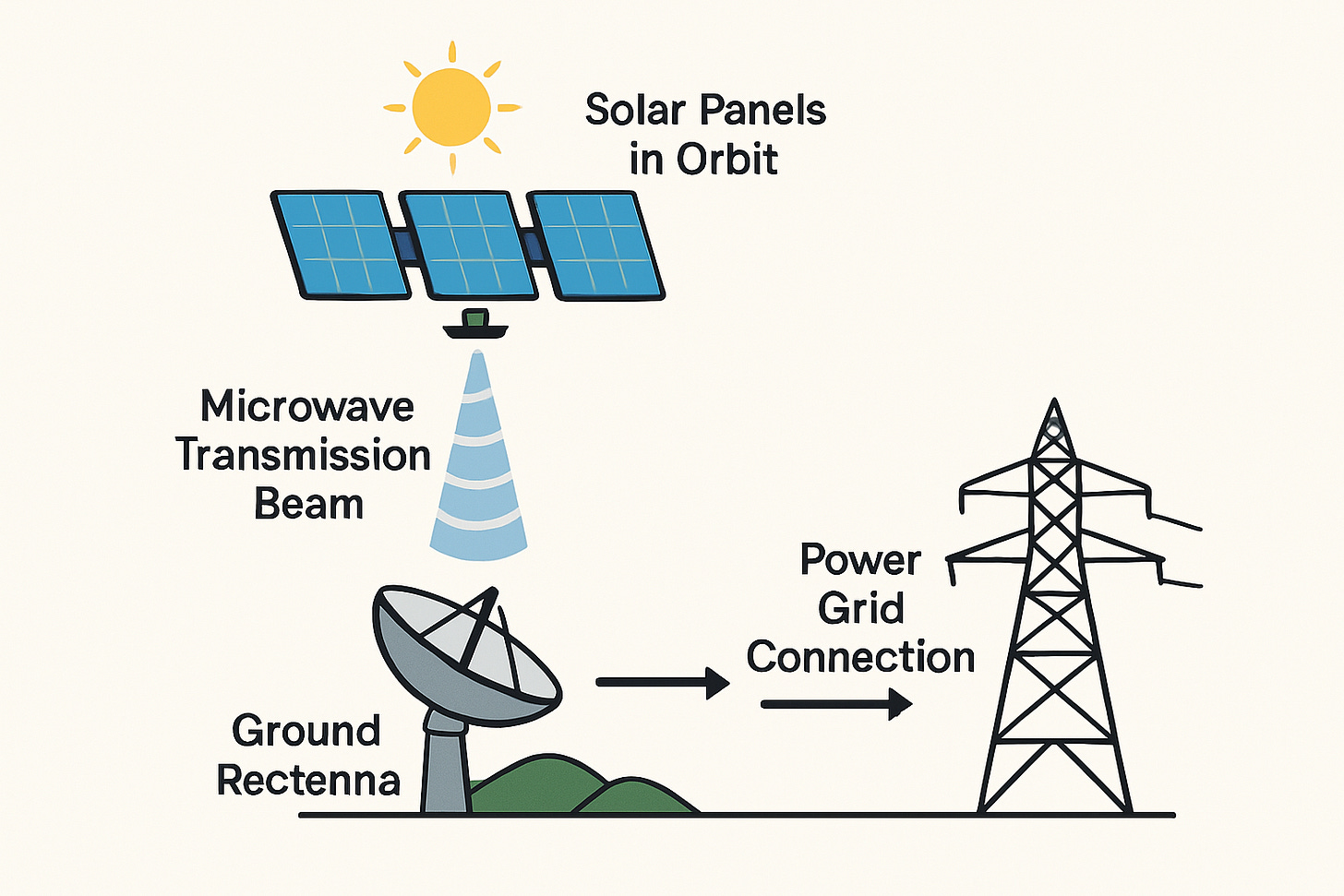As the world grapples with the escalating climate crisis and the urgent need for clean, reliable energy, scientists and engineers are looking to the skies for a revolutionary solution: space-based solar power (SBSP). The concept, once the realm of science fiction, is steadily moving toward reality. It involves capturing the sun's immense energy in space, where it is constant and unfiltered by the Earth's atmosphere, and beaming it down to power our planet. This ambitious technology promises a future of abundant, clean energy, but it also faces significant technical, economic, and logistical hurdles.
The fundamental idea behind SBSP is to overcome the limitations of terrestrial solar power. Ground-based solar farms are subject to weather conditions, the day-night cycle, and seasonal variations, which result in intermittent power generation. In space, a solar collector in geostationary orbit can receive sunlight 24 hours a day, nearly 365 days a year, gathering significantly more energy than an equivalent-sized panel on Earth. This constant stream of energy could provide a reliable baseload power source, a critical component for a stable global energy grid.
Mechanism and Techniques
A typical space-based solar power system consists of three primary components:
A large solar collector satellite: This satellite, often kilometers in size, would be equipped with highly efficient photovoltaic panels or solar concentrators to capture sunlight.
A power conversion and transmission system: The collected solar energy is converted into electricity and then into a form suitable for wireless transmission to Earth. The two main proposed methods for this are microwave beams and laser beams.
A ground-based receiving station (rectenna): This is a large array of antennas that would receive the transmitted energy and convert it back into electricity for distribution through the existing power grid.
The choice between microwave and laser transmission involves significant trade-offs. Microwaves can pass through clouds and precipitation with minimal loss, making them a more reliable option for all-weather power delivery. The concept of a "rectenna" (rectifying antenna) to efficiently convert microwaves back into DC electricity has been proven and tested. However, microwave transmission requires a very large transmitting antenna in space and an even larger receiving rectenna on the ground, potentially spanning several kilometers, to ensure a safe and low-intensity energy beam.
Laser transmission, on the other hand, allows for much smaller and lighter transmitting and receiving apertures. This could reduce the launch mass and cost of the system. However, lasers are blocked by clouds and atmospheric scattering, which would limit their effectiveness to regions with clear skies or require a network of multiple ground stations.
Pros:
Continuous Power Generation: Unlike terrestrial solar, SBSP can provide a constant, uninterrupted power supply, making it a reliable source for baseload electricity.
Higher Energy Capture: A solar panel in space can collect significantly more energy than one on Earth due to the absence of atmospheric absorption, nighttime, and cloud cover.
Reduced Land Use: While the receiving rectenna would be large, the overall land footprint per unit of energy could be less than that of large-scale terrestrial solar or wind farms when considering their intermittent nature and the need for energy storage.
Global Power Distribution: A constellation of SBSP satellites could potentially beam power to any location on Earth, including remote or disaster-stricken areas.
Cons:
High Initial Cost: The primary barrier to SBSP is the astronomical cost of developing, manufacturing, and launching the massive components into orbit. The sheer scale of the required satellites makes it a multi-billion dollar endeavor.
Technological Hurdles: Significant advancements are still needed in areas such as in-orbit assembly and robotics, high-efficiency solar cells, and safe, efficient wireless power transmission over vast distances.
Space Debris and Maintenance: The large structures would be vulnerable to impacts from space debris. Performing maintenance and repairs on such complex systems in geostationary orbit would be incredibly challenging and expensive.
Environmental and Safety Concerns: There are public concerns about the long-term effects of low-intensity microwave radiation on the atmosphere and living organisms, although studies suggest the beam density would be well within safe limits. The environmental impact of launching hundreds of heavy-lift rockets must also be considered.
Progress to Date
The concept of SBSP was first proposed in 1968 by Peter Glaser. For decades, it remained largely a theoretical pursuit. However, recent technological advancements and a growing sense of urgency regarding climate change have revitalized interest and investment in the field.
A landmark achievement occurred in 2023 when the California Institute of Technology (Caltech) successfully demonstrated wireless power transmission in space with its Space Solar Power Demonstrator (SSPD-1). The experiment, known as the Microwave Array for Power-transfer Low-orbit Experiment (MAPLE), successfully beamed a detectable amount of energy from a transmitter to a receiver on the same spacecraft and also transmitted a small amount of energy to a receiver on the Caltech campus in Pasadena, California. This was the first time that space-to-space and space-to-surface wireless power transfer had been achieved
While a commercial-scale space-based solar power plant is likely still decades away, the recent breakthroughs have ignited a new wave of optimism. If the remaining challenges can be overcome, harnessing solar power from space could become a cornerstone of a sustainable, clean energy future for all of humanity.




